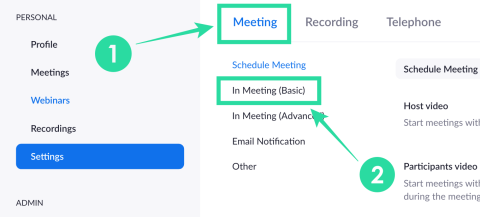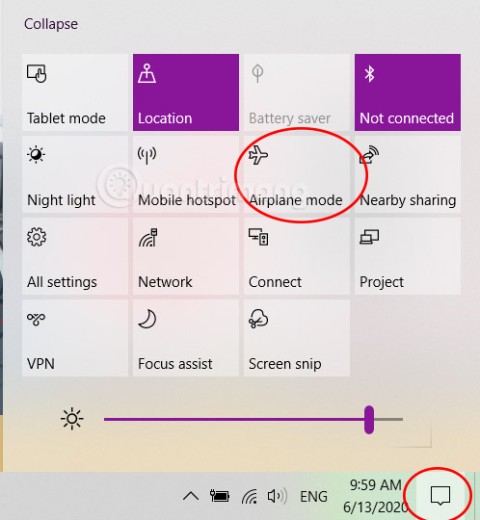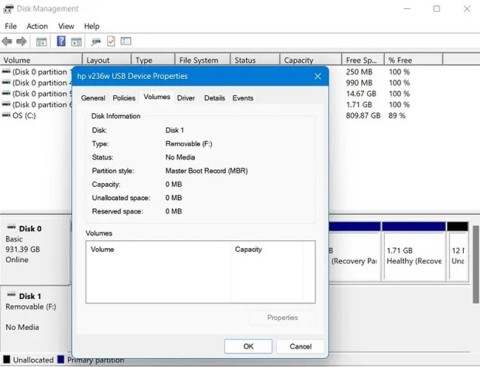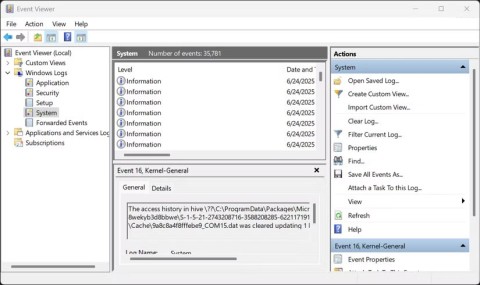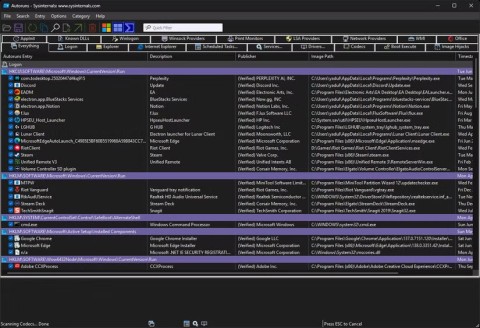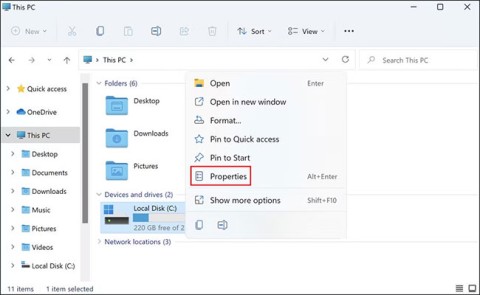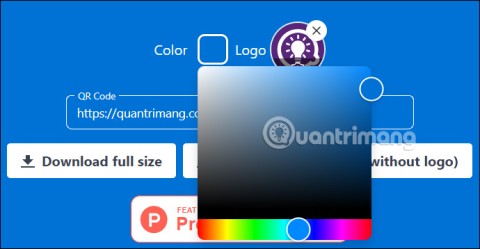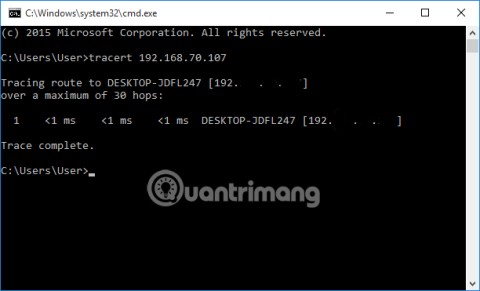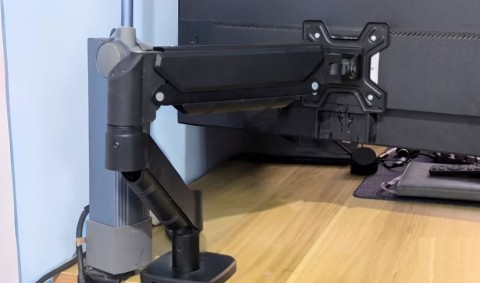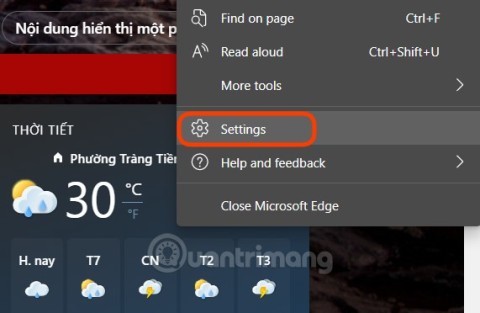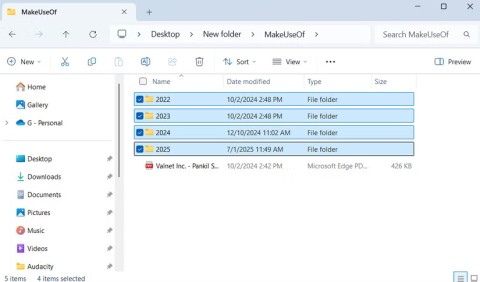Operacinės sistemos yra bet kurio kompiuterio gelbėjimosi linija, nes be jų būtų neįmanoma siųsti el. laiškų, žiūrėti kačių vaizdo įrašus ar kalbėtis su draugais. Tačiau retkarčiais kiekviena operacinė sistema susiduria su tokiomis problemomis kaip lėtas paleidimas, programų gedimai, trikdantis ekranas, niūrus garsas ir kt.
Jei manote, kad jūsų „Windows 11“ kopija pastaruoju metu taip pat elgiasi keistai, manome, kad laikas imtis veiksmų į savo rankas ir pataisyti „Windows 11“.
Prieš skubėdami į artimiausią kompiuterių taisymo techniką, pažvelkime į daugybę jūsų turimų būdų, kurie gali padėti pataisyti sugadintą „Windows 11“ diegimą.
Turinys
1 būdas: naudokite „Windows“ trikčių šalinimo įrankį
„Windows“ trikčių šalinimo priemonės nuėjo ilgą kelią ir dabar gali išspręsti daugumą problemų vienu paspaudimu. Dauguma trikčių šalinimo komandų ir patikrų, kurios paprastai buvo atliekamos naudojant CMD ir PowerShell, dabar yra įtrauktos į trikčių šalinimo priemones, todėl jas lengviau naudoti iškilus problemoms. Jei vis tiek negalite pataisyti ir pataisyti „Windows 11“ diegimo, gali būti verta išbandyti trikčių šalinimo įrankį. Norėdami pradėti, naudokite toliau pateiktą vadovą.
Paspauskite Windows + iklaviatūrą, kad atidarytumėte nustatymų programą. Įsitikinkite, kad kairėje pusėje pasirinkta „Sistema“, tada dešinėje spustelėkite „Trikčių šalinimas“.
![Kaip pataisyti „Windows 11“ [15 būdų] Kaip pataisyti „Windows 11“ [15 būdų]](https://img2.webtech360.com/resources8/images31/image-6439-0105182722076.png)
Spustelėkite „Kiti trikčių šalinimo įrankiai“.
![Kaip pataisyti „Windows 11“ [15 būdų] Kaip pataisyti „Windows 11“ [15 būdų]](https://img2.webtech360.com/resources8/images31/image-405-0105182722143.png)
Dabar suraskite atitinkamą trikčių šalinimo įrankį, skirtą dabartinei problemai, atsižvelgdami į problemą, kurią turite diegdami. Šalia trikčių šalinimo priemonės spustelėkite „Vykdyti“.
![Kaip pataisyti „Windows 11“ [15 būdų] Kaip pataisyti „Windows 11“ [15 būdų]](https://img2.webtech360.com/resources8/images31/image-9440-0105182722204.png)
Trikčių šalinimo įrankis dabar atliks savo darbą ir išspręs visas su atitinkamu komponentu ar funkcija susijusias problemas.
![Kaip pataisyti „Windows 11“ [15 būdų] Kaip pataisyti „Windows 11“ [15 būdų]](https://img2.webtech360.com/resources8/images31/image-9235-0105182955896.png)
2 būdas: pašalinkite ir iš naujo įdiekite visus naujausius „Windows“ naujinimus
Jei po naujausio „Windows“ naujinimo susiduriate su atsitiktinėmis gedimais, lėtu veikimu, drebėjimu ar netikėtomis klaidomis, galite pabandyti pašalinti naujausius naujinimus, kad išspręstumėte problemą. Šie naujinimai turėtų būti grąžinti atkuriant sistemą, naudojant viršuje pateiktą vadovą, bet jei neturite atkūrimo taško, galite naudoti toliau pateiktą vadovą, kad rankiniu būdu pašalintumėte „Windows“ naujinimus iš „Windows 11“ sistemos.
Paspauskite Windows + iklaviatūrą, kad atidarytumėte nustatymų programą. Dabar kairėje spustelėkite „Windows Update“.
![Kaip pataisyti „Windows 11“ [15 būdų] Kaip pataisyti „Windows 11“ [15 būdų]](https://img2.webtech360.com/resources8/images31/image-6752-0105182955965.png)
Spustelėkite „Atnaujinti istoriją“.
![Kaip pataisyti „Windows 11“ [15 būdų] Kaip pataisyti „Windows 11“ [15 būdų]](https://img2.webtech360.com/resources8/images31/image-9408-0105182722517.png)
Slinkite į apačią ir spustelėkite „Pašalinti naujinimus“.
![Kaip pataisyti „Windows 11“ [15 būdų] Kaip pataisyti „Windows 11“ [15 būdų]](https://img2.webtech360.com/resources8/images31/image-1959-0105182722745.png)
Dabar būsite nukreipti į valdymo skydelį, kuriame gausite visų naujausių jūsų sistemoje įdiegtų pagrindinių naujinimų sąrašą. Negausite šiame sąraše išvardytų saugos naujinimų, nes jų negalima pašalinti dėl saugumo priežasčių. Spustelėkite ir pasirinkite naujinimą, kurį norite pašalinti.
![Kaip pataisyti „Windows 11“ [15 būdų] Kaip pataisyti „Windows 11“ [15 būdų]](https://img2.webtech360.com/resources8/images31/image-3028-0105182722836.png)
Dabar viršuje spustelėkite „Pašalinti“.
![Kaip pataisyti „Windows 11“ [15 būdų] Kaip pataisyti „Windows 11“ [15 būdų]](https://img2.webtech360.com/resources8/images31/image-2165-0105182722899.png)
Pastaba: Jei negaunate parinkties Pašalinti, greičiausiai taip yra todėl, kad bandote pašalinti gyvybiškai svarbų „Windows“ komponentą, kuris pažeistų dabartinio diegimo funkcionalumą.
Spustelėkite „Taip“, kad patvirtintumėte savo pasirinkimą.
![Kaip pataisyti „Windows 11“ [15 būdų] Kaip pataisyti „Windows 11“ [15 būdų]](https://img2.webtech360.com/resources8/images31/image-9581-0105182722985.png)
Pasirinktas naujinimas dabar bus pašalintas iš jūsų sistemos. Rekomenduojame iš naujo paleisti sistemą ir patikrinti, ar problema, su kuria susidūrėte, išspręsta. Jei ne, toliau šalinkite „Windows“ naujinimus, kol surasite kaltininką.
3 būdas: atkūrimas į senesnį sistemos atkūrimo tašką
Pastaba: Šis metodas daro prielaidą, kad turite funkcinę „Windows 11“ kopiją, kurią galite paleisti.
Sistemos atkūrimo taškai gali būti laikomi būdais atkurti sistemos ankstesnę Windows būseną (kai buvo sukurtas atkūrimo taškas) kartu su programėlėmis ir nustatymais, kurie tuo metu buvo jūsų kompiuteryje.
„Windows 11“ reguliariais intervalais automatiškai sukuria sistemos atkūrimo taškus. Jei norite, taip pat galite sukurti atkūrimo taškus.
Jie taip pat sukuriami, kai įdiegiama nauja programa arba „Windows“ naujinimas.
Štai kaip galite pabandyti pataisyti „Windows 11“ naudodami atkūrimo taškus.
Atidarykite meniu „Pradėti“ ir įveskite „Sukurti atkūrimo tašką“. Tada spustelėkite toliau pateiktą parinktį.
![Kaip pataisyti „Windows 11“ [15 būdų] Kaip pataisyti „Windows 11“ [15 būdų]](https://img2.webtech360.com/resources8/images31/image-7098-0105182723056.png)
Dabar turėtų būti atidarytas iššokantis meniu su pavadinimu „Sistemos ypatybės“ ir turėtumėte matyti su sistemos atkūrimu susijusias parinktis, kaip parodyta toliau.
![Kaip pataisyti „Windows 11“ [15 būdų] Kaip pataisyti „Windows 11“ [15 būdų]](https://img2.webtech360.com/resources8/images31/image-1063-0105182723121.png)
Jei jūsų iššokantis meniu atrodo identiškas mūsų, kai „Apsauga“ išjungta visuose jūsų įrenginiuose, turime jums blogų naujienų. Dėl ankstesnių sistemos atkūrimo taškų trūkumo nėra prasmės toliau taikyti šį metodą, nes nėra atkūrimo taško, į kurį būtų galima grįžti.
Šiuo metu rekomenduojame išbandyti kitą metodą.
Patarimas: jei skaitote tai tik norėdami pamatyti, kaip viskas veikia, siūlome įjungti sistemos disko (paryškinta toliau), kuriame yra „Windows 11“, apsaugą ir dabar sukurti atkūrimo tašką.
![Kaip pataisyti „Windows 11“ [15 būdų] Kaip pataisyti „Windows 11“ [15 būdų]](https://img2.webtech360.com/resources8/images31/image-2132-0105182723214.png)
Štai kaip galite tai padaryti.
Pasirinkite diską, pažymėtą „Sistema“, ir spustelėkite „Konfigūruoti“.
![Kaip pataisyti „Windows 11“ [15 būdų] Kaip pataisyti „Windows 11“ [15 būdų]](https://img2.webtech360.com/resources8/images31/image-6753-0105182723323.png)
Tada spustelėkite mygtuką „Įjungti sistemos apsaugą“ ir paskirkite vietos sistemos atkūrimo taškams, perkeldami žemiau esantį slankiklį. Mes skyrėme tik 4% savo sistemos disko, tai yra beveik 4,5 GB.
Jei atkūrimo taškų skaičius padidėtų arba padidėtų, senesni būtų automatiškai ištrinami, kad būtų vietos naujiems.
Spustelėkite „Taikyti“, tada „Gerai“.
![Kaip pataisyti „Windows 11“ [15 būdų] Kaip pataisyti „Windows 11“ [15 būdų]](https://img2.webtech360.com/resources8/images31/image-2650-0105182723417.png)
Anksčiau pasirinktame diske dabar turėtų būti įjungta „Apsauga“ ir dabar turėtumėte galėti kurti sistemos atkūrimo taškus.
![Kaip pataisyti „Windows 11“ [15 būdų] Kaip pataisyti „Windows 11“ [15 būdų]](https://img2.webtech360.com/resources8/images31/image-3719-0105182723520.png)
Kai esate tame pačiame iššokančiame meniu, spustelėkite mygtuką „Sukurti“, kad sukurtumėte pirmąjį savo kompiuterio sistemos atkūrimo tašką.
![Kaip pataisyti „Windows 11“ [15 būdų] Kaip pataisyti „Windows 11“ [15 būdų]](https://img2.webtech360.com/resources8/images31/image-7789-0105182723725.png)
Dabar turėtų pasirodyti iššokantis langas, kuriame prašoma įvesti atkūrimo taško pavadinimą. Nedvejodami įveskite viską, ko norite. Jūsų patogumui dabartinis kompiuterio sistemos laikas ir duomenys pridedami automatiškai, kad šis atkūrimo taškas būtų atskirtas nuo kitų. Kol kas rašome „Fresh Install“, nes neseniai iš naujo įdiegėme „Windows 11“.
Baigę spustelėkite „Sukurti“.
![Kaip pataisyti „Windows 11“ [15 būdų] Kaip pataisyti „Windows 11“ [15 būdų]](https://img2.webtech360.com/resources8/images31/image-2823-0105182723892.png)
Po kurio laiko jūsų atkūrimo taškas turėtų būti paruoštas. Dabar turėtumėte galėti tai patikrinti spustelėdami mygtuką „Sistemos atkūrimas“.
![Kaip pataisyti „Windows 11“ [15 būdų] Kaip pataisyti „Windows 11“ [15 būdų]](https://img2.webtech360.com/resources8/images31/image-7821-0105182956057.png)
Spustelėkite Kitas.
![Kaip pataisyti „Windows 11“ [15 būdų] Kaip pataisyti „Windows 11“ [15 būdų]](https://img2.webtech360.com/resources8/images31/image-7756-0105182724049.png)
Ir jūsų naujai sukurtas sistemos atkūrimo taškas turėtų būti čia.
![Kaip pataisyti „Windows 11“ [15 būdų] Kaip pataisyti „Windows 11“ [15 būdų]](https://img2.webtech360.com/resources8/images31/image-6893-0105182724113.png)
Pasirinkę atkūrimo tašką ir spustelėję (tada įgalintą) mygtuką „Kitas“, turėsite atkurti kompiuterį iki to momento, kai buvo sukurtas atkūrimo taškas.
4 metodas: SFC komandų eilutės įrankio naudojimas
Sistemos failų tikrintuvas (SFC) ir diegimo vaizdų aptarnavimas ir valdymas (DISM) yra du komandų eilutės įrankiai, kuriuos korporacijų IT specialistai dažniau naudoja „Windows“ įrenginiams aptarnauti.
Jei apie šiuos įrankius girdite pirmą kartą, nėra ko jaudintis, nes paprastai jie laikomi elektriniais įrankiais ir apie juos žino nedaugelis.
Pirmiausia pradėkime nuo SFC ir pažiūrėkime, kaip galite pataisyti „Windows 11“.
SFC galima naudoti apsaugotiems failams („Windows“ failams) nuskaityti ir patikrinti. Jei nustatoma, kad failas buvo sugadintas ir jo negalima patikrinti, jis bando atkurti naują kopiją iš toliau esančio aplanko jūsų kompiuteryje.
C:\Windows
Štai kaip galite išbandyti šią parinktį.
Spustelėkite mygtuką „Pradėti“, įveskite „komandų eilutę“ ir būtinai paleiskite programą kaip administratorių, kaip paryškinta toliau.
![Kaip pataisyti „Windows 11“ [15 būdų] Kaip pataisyti „Windows 11“ [15 būdų]](https://img2.webtech360.com/resources8/images31/image-8890-0105182956148.png)
Atsidūrę komandų eilutėje įveskite šią komandą arba tiesiog nukopijuokite ir įklijuokite ją. Tada paspauskite „Enter“.
sfc /scannow
Aukščiau pateikta komanda akimirksniu pradeda nuskaitymą, o visa tai užtrunka maždaug kelias minutes.
![Kaip pataisyti „Windows 11“ [15 būdų] Kaip pataisyti „Windows 11“ [15 būdų]](https://img2.webtech360.com/resources8/images31/image-4377-0105182724504.png)
Jei nuskaitymas nustato, kad visi failai yra geros būklės, tai bus rodoma taip, kaip nurodyta toliau.
![Kaip pataisyti „Windows 11“ [15 būdų] Kaip pataisyti „Windows 11“ [15 būdų]](https://img2.webtech360.com/resources8/images31/image-5446-0105182724592.png)
Bet jei jūsų kompiuteryje yra pažeistų „Windows“ failų, SFC turėtų sugebėti juos pataisyti nauja kopija.
5 metodas: DISM komandų eilutės įrankio naudojimas
DISM yra dar vienas komandų eilutės įrankis, kuris yra daug galingesnis nei SFC. Jis gali dirbti su kelių tipų „Windows 11“ vaizdais .wim ir .esd formatais, tvarkyti tvarkykles prieš diegiant vaizdus kompiuteriuose ir dar daugiau.
Pažiūrėkime, kaip galite naudoti DISM taisydami „Windows 11“.
Atidarykite komandų eilutę kaip administratorių, atlikdami veiksmus, kuriuos ką tik minėjome SFC.
Tada įklijuokite toliau pateiktą komandą, kad patikrintumėte, ar „Windows 11“ diegimas nėra klaidų, ir paspauskite „Enter“.
Dism /Online /Cleanup-Image /ScanHealth
Turėtumėte pamatyti kažką panašaus.
![Kaip pataisyti „Windows 11“ [15 būdų] Kaip pataisyti „Windows 11“ [15 būdų]](https://img2.webtech360.com/resources8/images31/image-5068-0105182725172.png)
Kai baigsite, įrankis turėtų pranešti apie rezultatus. Štai kaip atrodo mūsų ekranas.
![Kaip pataisyti „Windows 11“ [15 būdų] Kaip pataisyti „Windows 11“ [15 būdų]](https://img2.webtech360.com/resources8/images31/image-9689-0105182725280.png)
Tada paleiskite šią komandą, kad sužinotumėte, ar buvo aptikta kokių nors problemų ir kaip ją galima išspręsti.
Dism /Online /Cleanup-Image /CheckHealth
Kadangi mūsų kompiuteris veikė gerai, aukščiau pateikta komanda nepranešė apie nulį problemų. Jūsų gali būti kitoks.
![Kaip pataisyti „Windows 11“ [15 būdų] Kaip pataisyti „Windows 11“ [15 būdų]](https://img2.webtech360.com/resources8/images31/image-3654-0105182725335.png)
Jei DISM pranešė apie problemas, susijusias su jūsų kompiuteriu, toliau nurodyta kita komanda, kurią turėtumėte paleisti. Įklijuokite jį ir paspauskite „Enter“.
DISM /Online /Cleanup-Image /RestoreHealth
Aukščiau pateikta komanda paprašys galiojančių sugadintų failų kopijų iš „Windows Update“. Štai kaip komanda atrodo veikiant.
![Kaip pataisyti „Windows 11“ [15 būdų] Kaip pataisyti „Windows 11“ [15 būdų]](https://img2.webtech360.com/resources8/images31/image-7724-0105182725565.png)
Ir štai kaip jis atrodo baigus apdoroti.
![Kaip pataisyti „Windows 11“ [15 būdų] Kaip pataisyti „Windows 11“ [15 būdų]](https://img2.webtech360.com/resources8/images31/image-9311-0105182725854.png)
Viskas, ką jums reikia padaryti, tai iš naujo paleisti kompiuterį.
Jei laikote save žmogumi, kuris supranta komandinės eilutės įrankius ir jų parametrus, ir norėtumėte daugiau sužinoti apie SFC ir DISM bei su jais naudojamų parametrų diapazoną, čia yra visa SFC dokumentacija ir visa nuoroda. skirtas DISM . Pasimėgaukite informacija!
Patarimas: jei jūsų „Windows 11“ dažnai stringa, po kelių sekundžių paleiskite iš naujo ir parodykite įspėjimą su daugybe skaičių ir abėcėlių (dar žinomų kaip klaidų kodai), primygtinai rekomenduojame įdėti juos į paieškos variklį, pvz., „Google“, ir suprasti, ką jie reiškia. Šis trikčių šalinimo būdas yra labai veiksmingas kovojant su konkrečiomis klaidomis ir problemomis ir dažnai gali būti išsigelbėjimas.
6 būdas: „Windows 11“ paleisties taisymo naudojimas
„Windows 11“ yra integruotas paleisties taisymo įrankis, skirtas aptikti ir pašalinti įprastas paleidimo problemas, su kuriomis galite susidurti. Pažiūrėkime, kaip galite naudoti paleisties taisymą, kad pataisytumėte „Windows 11“.
Atidarykite meniu Pradėti ir spustelėkite maitinimo mygtuką.
![Kaip pataisyti „Windows 11“ [15 būdų] Kaip pataisyti „Windows 11“ [15 būdų]](https://img2.webtech360.com/resources8/images31/image-3277-0105182725914.png)
Laikykite nuspaudę klavišą „Shift“ ir spustelėkite „Paleisti iš naujo“.
![Kaip pataisyti „Windows 11“ [15 būdų] Kaip pataisyti „Windows 11“ [15 būdų]](https://img2.webtech360.com/resources8/images31/image-794-0105182726004.png)
Jūsų kompiuteris turėtų paleisti mėlyną ekraną su daugybe parinkčių. Spustelėkite „Trikčių šalinimas“.
![Kaip pataisyti „Windows 11“ [15 būdų] Kaip pataisyti „Windows 11“ [15 būdų]](https://img2.webtech360.com/resources8/images31/image-5932-0105182726311.jpg)
Spustelėkite „Išplėstinės parinktys“.
![Kaip pataisyti „Windows 11“ [15 būdų] Kaip pataisyti „Windows 11“ [15 būdų]](https://img2.webtech360.com/resources8/images31/image-5382-0105182726417.jpg)
Spustelėkite „Startup Repair“.
Netrukus po to „Windows“ turėtų nuskaityti ir diagnozuoti jūsų kompiuterį, ar nėra problemų, kurios gali trukdyti jam tinkamai veikti. Leiskite jai veikti savo stebuklingai ir po kurio laiko jūsų „Windows 11“ kopija turėtų būti be jokių problemų.
Patarimas: jei „Startup Repair“ nepavyksta ir matote toliau pateiktą ekraną, tai gali būti dvi priežastys. Arba „Windows 11“ nepavyko nustatyti problemų, arba tiesiog nėra problemų su kompiuteriu.
![Kaip pataisyti „Windows 11“ [15 būdų] Kaip pataisyti „Windows 11“ [15 būdų]](https://img2.webtech360.com/resources8/images31/image-4518-0105182726486.jpg)
Šiuo metu galite pabandyti vadovautis 3 metodo 2 parinktimi, kad pradėtumėte „Windows 11“ taisymą. Taip pat galite pabandyti iš naujo įdiegti „Windows 11“ naudodami „Windows 11“ sąrankos parinktį „Atnaujinti“, o ne atlikti švarų diegimą ir nuvalykite diską.
Šis diegimo būdas turėtų iš naujo įdiegti „Windows 11“, išsaugant visus failus, programas ir nustatymus.
7 metodas: „Windows 11“ diegimo programos ISO failo naudojimas
Ar žinojote, kad failai, kuriuos naudojote diegdami „Windows 11“, taip pat gali būti naudojami pažeistai „Windows 11“ kopijai taisyti?
Nedaug žmonių tai žino, bet tai galima lengvai padaryti ir visai neužtrunka.
Kad šis metodas veiktų, jums reikia prieigos prie „Windows 11“ diegimo failų (ISO) arba diegimo programos USB disko, kurį galbūt naudojote anksčiau diegdami „Windows 11“.
1 parinktis: naudokite sąrankos failą iš Windows 11 ISO
Pažiūrėkite, ar jūsų kompiuteryje yra „Windows 11“ ISO. Jei taip, tobula! Nereikia nieko parsisiųsti.
Jei neturite „Windows 11“ ISO, siūlome vadovautis šiuo vadovu, kad atsisiųstumėte naujausią galimą ISO .
Prieš tęsdami įsitikinkite, kad galite paleisti „Windows 11“ ir pasiekti ISO. Jei galite, pereikime prie kito žingsnio.
Raskite „Windows 11“ ISO ir dukart spustelėkite jį.
![Kaip pataisyti „Windows 11“ [15 būdų] Kaip pataisyti „Windows 11“ [15 būdų]](https://img2.webtech360.com/resources8/images31/image-7519-0105182726601.png)
Dabar ISO turėtų būti sumontuotas virtualiame disko įrenginyje jūsų „Windows 11“ kompiuteryje ir turėtų atrodyti panašiai
![Kaip pataisyti „Windows 11“ [15 būdų] Kaip pataisyti „Windows 11“ [15 būdų]](https://img2.webtech360.com/resources8/images31/image-6969-0105182726712.png)
Dukart spustelėkite virtualųjį diską. Įėjus į vidų, turėtų būti failas pavadinimu „setup“, dukart spustelėkite jį.
![Kaip pataisyti „Windows 11“ [15 būdų] Kaip pataisyti „Windows 11“ [15 būdų]](https://img2.webtech360.com/resources8/images31/image-4486-0105182726796.png)
Patarimas: Arba taip pat galite išgauti ISO kur nors savo kompiuteryje, o tai, žinoma, užtruktų šiek tiek laiko, bet turėtų duoti tą patį rezultatą.
Palaukite, kol prasidės „Windows 11“ sąranka. Baigę turėtumėte pamatyti ekraną, panašų į toliau pateiktą. Spustelėkite „Kitas“.
![Kaip pataisyti „Windows 11“ [15 būdų] Kaip pataisyti „Windows 11“ [15 būdų]](https://img2.webtech360.com/resources8/images31/image-3622-0105182726853.png)
Sutikite su taisyklėmis ir sąlygomis.
![Kaip pataisyti „Windows 11“ [15 būdų] Kaip pataisyti „Windows 11“ [15 būdų]](https://img2.webtech360.com/resources8/images31/image-4691-0105182726957.png)
Čia pasirinkite jums tinkamiausią variantą ir spustelėkite „Kitas“. Norėtume pasilikti failus, todėl pasirinkome „Saugoti asmeninius failus ir programas“.
![Kaip pataisyti „Windows 11“ [15 būdų] Kaip pataisyti „Windows 11“ [15 būdų]](https://img2.webtech360.com/resources8/images31/image-4141-0105182727056.png)
Spustelėkite „Įdiegti“, kad pradėtumėte diegimą.
![Kaip pataisyti „Windows 11“ [15 būdų] Kaip pataisyti „Windows 11“ [15 būdų]](https://img2.webtech360.com/resources8/images31/image-7142-0105182727192.png)
Po kelių sekundžių sąranka turėtų pradėti ruošti kompiuterį vietoje atnaujinimui, kuris sutaisys ir atnaujins visus failus, reikalingus norint paleisti „Windows 11“ kompiuteryje.
![Kaip pataisyti „Windows 11“ [15 būdų] Kaip pataisyti „Windows 11“ [15 būdų]](https://img2.webtech360.com/resources8/images31/image-4659-0105182727255.png)
Jūsų kompiuteris gali kelis kartus paleisti iš naujo, kad užbaigtų taisymą.
Kai sąranka bus baigta, jūsų „Windows 11“ kopija turėtų būti visiškai pataisyta ir paruošta naudoti.
2 parinktis: naudokite įkrovos USB diską
Jei dėl kokių nors priežasčių jūsų kompiuteriui nepavyksta paleisti „Windows 11“ arba tiesiog pakartotinai paleidžiamas iš naujo dėl sugadinto „Windows“ failo, ši parinktis jums puikiai tiks.
Prieš pradėdami patikrinkite, ar vis dar turite „Windows 11“ USB diegimo atmintinę, kurią galbūt naudojote įdiegdami „Windows 11“ savo kompiuteryje. Jei tai padarysite, nėra dėl ko jaudintis.
In case you don’t, here’s how you can create a Windows 11 USB installer within a couple of minutes. Do keep in mind that it requires another functional PC with internet to download Rufus and Windows 11 ISO. Simply connect the USB drive to your PC and restart your system. Press any key on your keyboard when prompted to boot from the recovery media and subsequently proceed to repair Windows with the on-screen instructions. You will have the option to reinstall Windows, fix missing files, fix boot order or even use CMD to perform your own checks. If you need any help, then you can this guide to reset Windows from within your recovery media setup and more.
Check this guide: How To Install Windows 11 From USB
Method #8: Repair or Fix Drivers
Many times you can face issues with your Windows installation due to incompatible, outdated, or conflicting drivers installed on your system. Drivers are essential programs that allow your components to communicate with your CPU and GPU for the proper functioning of your system. Having incompatible or conflicting drivers can cause issues with Windows and even take a significant impact on your performance. If some of your components seem to be misbehaving or you feel that your system is drastically slower than expected then it would be a good idea to check your drivers and perform any repairs if needed.
1. Check for conflicting or outdated drivers
Let’s check for conflicting or outdated drivers on your system. Windows automatically shows you a warning sign for misbehaving components or outdated drivers in Device Manager. Use the guide below to look for driver issues on your installation of Windows 11.
Press Windows + X on your keyboard and click on Device Manager.
![Kaip pataisyti „Windows 11“ [15 būdų] Kaip pataisyti „Windows 11“ [15 būdų]](https://img2.webtech360.com/resources8/images31/image-5728-0105182727364.png)
Look for components in the list with a warning side beside them. If any are found, use the methods below to troubleshoot driver issues on your system. However, if none are found then let’s check for new components on your system to identify misbehaving components.
Click on the ‘Scan for hardware changes’ button at the top of your screen.
![Kaip pataisyti „Windows 11“ [15 būdų] Kaip pataisyti „Windows 11“ [15 būdų]](https://img2.webtech360.com/resources8/images31/image-5177-0105182727469.png)
Windows will now scan for hardware changes and install any new components or drivers found on your PC.
![Kaip pataisyti „Windows 11“ [15 būdų] Kaip pataisyti „Windows 11“ [15 būdų]](https://img2.webtech360.com/resources8/images31/image-6246-0105182727564.png)
2. Fix driver issues
If you wish to fix driver issues on your system then you will need to reinstall drivers for the concerned component on your system. This can be done through Windows and manually as well. We recommend manually force removing drivers only if you are unable to remove the driver through Device Manager in Windows. Force removing the wrong drivers can cause serious issues on your system and even force you to reinstall Windows altogether. Hence, ensure that you identify and properly force remove drivers from your system only for the malfunctioning component. Use one of the guides below depending on your current needs and requirements.
Note: If you are using a laptop or a pre-built system then we recommend you download specific drivers for the concerned component from your OEM support side beforehand. This will allow you to install the necessary drivers easily once you have removed the malfunctioning driver.
Read: 6 Ways to Update Drivers on Windows 11
Option 1: Remove and reinstall a component through Device Manager
Press Windows + X on your keyboard and click on ‘Device Manager’.
![Kaip pataisyti „Windows 11“ [15 būdų] Kaip pataisyti „Windows 11“ [15 būdų]](https://img2.webtech360.com/resources8/images31/image-5728-0105182727364.png)
Right-click on the component for which you wish to remove the driver and select Properties.
![Kaip pataisyti „Windows 11“ [15 būdų] Kaip pataisyti „Windows 11“ [15 būdų]](https://img2.webtech360.com/resources8/images31/image-5695-0105182727667.png)
Now click and switch to the Driver tab at the top.
![Kaip pataisyti „Windows 11“ [15 būdų] Kaip pataisyti „Windows 11“ [15 būdų]](https://img2.webtech360.com/resources8/images31/image-3418-0105182727905.png)
Click on ‘Uninstall device’.
![Kaip pataisyti „Windows 11“ [15 būdų] Kaip pataisyti „Windows 11“ [15 būdų]](https://img2.webtech360.com/resources8/images31/image-2867-0105182728010.png)
Check the box for ‘Attempt to remove the driver for this device’.
![Kaip pataisyti „Windows 11“ [15 būdų] Kaip pataisyti „Windows 11“ [15 būdų]](https://img2.webtech360.com/resources8/images31/image-2316-0105182728120.png)
Finally, click on ‘Uninstall’.
![Kaip pataisyti „Windows 11“ [15 būdų] Kaip pataisyti „Windows 11“ [15 būdų]](https://img2.webtech360.com/resources8/images31/image-902-0105182728296.png)
The device driver will now be removed and the device will be uninstalled from your system. You will now be prompted to restart your device. Restart your device as soon as possible and then reinstall the concerned drivers from your OEM’s support site. If you do not have the concerned drivers on your OEM site, then simply scan for hardware changes using the guide above and the necessary drivers will be automatically installed on your system.
Option 2: Manually force remove a driver and reinstall it
You can also manually force remove a driver using a third-party utility. This is not recommended as if Windows is not allowing you to remove a driver then it is probably an essential component that could cause issues on your system. We recommend you properly identify the concerned drivers before removing them from your system. Additionally, you should keep the latest replacement drivers handy so that you can reinstall them as soon as possible. Use the guide below to manually force delete concerned drivers from your system.
We will be using Driver Store Explorer to manually force remove the concerned drivers from your system. Driver Store Explorer is an open-source utility used to identify and remove all the drivers installed on your system. It is hosted on GitHub and can be compiled natively too in case privacy is a concern.
Download Driver Store Explorer to your local storage using the link above. Extract the archive to a convenient location and then launch the app using Rapr.exe.
![Kaip pataisyti „Windows 11“ [15 būdų] Kaip pataisyti „Windows 11“ [15 būdų]](https://img2.webtech360.com/resources8/images31/image-3903-0105182728416.png)
The app will now launch and scan all the drivers installed on your system. Once the list shows up, you can sort it based on the various columns available to you. We recommend you sort your drivers by ‘Provider’ as this will make it easier for you to search the concerned driver based on the manufacturer. Click on Provider at the top to arrange all the drivers ascendingly based on their provider’s name.
![Kaip pataisyti „Windows 11“ [15 būdų] Kaip pataisyti „Windows 11“ [15 būdų]](https://img2.webtech360.com/resources8/images31/image-1420-0105182728498.png)
Scroll the list and identify the concerned driver. Once found check the box beside it.
![Kaip pataisyti „Windows 11“ [15 būdų] Kaip pataisyti „Windows 11“ [15 būdų]](https://img2.webtech360.com/resources8/images31/image-2489-0105182728594.png)
You can now also click on ‘Select oid drivers’ on your right to automatically identify and select other old drivers installed on your system. However, we wouldn’t recommend this on pre-built systems and laptops that can sometimes get faulty driver updates in the future as the device gets older which degrade overall performance in return.
![Kaip pataisyti „Windows 11“ [15 būdų] Kaip pataisyti „Windows 11“ [15 būdų]](https://img2.webtech360.com/resources8/images31/image-3558-0105182728684.png)
Check the box for ‘Force Deletion’ on your right.
![Kaip pataisyti „Windows 11“ [15 būdų] Kaip pataisyti „Windows 11“ [15 būdų]](https://img2.webtech360.com/resources8/images31/image-7422-0105182728754.png)
Finally, click on ‘Delete Driver(s)’. This will force delete all the selected drivers from your system. We highly recommend you restart your system after this and install the new updated drivers you downloaded as soon as possible.
![Kaip pataisyti „Windows 11“ [15 būdų] Kaip pataisyti „Windows 11“ [15 būdų]](https://img2.webtech360.com/resources8/images31/image-212-0105182728819.png)
If faulty drivers were the cause of your issues with Windows 11, then a manual reinstall should help fix this in most cases.
Method #9: Resetting your PC
Like Windows 10, Windows 11 also comes with a nifty feature called ‘Reset this PC’. This can be a lifesaver if you need to clean your PC and start over with Windows 11. Once initiated, the process will roll back Windows 11 to its factory settings.
Here’s how you can proceed with it.
Open the ‘Start’ menu and type in “reset this pc”. You should get a result similar to what’s shown below. Click on ‘Reset this PC’.
![Kaip pataisyti „Windows 11“ [15 būdų] Kaip pataisyti „Windows 11“ [15 būdų]](https://img2.webtech360.com/resources8/images31/image-3525-0105182728991.png)
You should now be in your PC’s Recovery section within the Settings app. To proceed with the reset, simply click on the ‘Reset PC’ button.
![Kaip pataisyti „Windows 11“ [15 būdų] Kaip pataisyti „Windows 11“ [15 būdų]](https://img2.webtech360.com/resources8/images31/image-4594-0105182729090.png)
The next screen should ask you if you’d like to keep your files or remove them entirely. Pick the appropriate option to start resetting your Windows 11.
![Kaip pataisyti „Windows 11“ [15 būdų] Kaip pataisyti „Windows 11“ [15 būdų]](https://img2.webtech360.com/resources8/images31/image-9527-0105182729253.png)
Your selection should be followed by a reboot or two and in a few minutes, your PC should boot into a refreshed Windows 11.
Method #10: Fix boot issues with Windows 11
If you are having boot issues with Windows 11 then we can use bootrec.exe tool to fix most boot issues. Use the guide below to run bootrec.exe on your system. You will need to boot into Windows Recovery and then use CMD to execute these commands though. Use one of the methods above to boot into recovery mode in Windows via Settings or a recovery media and then use the guide below to execute bootrec commands and fix boot issues with Windows 11.
When at the recovery screen press Shift + F10 to bring up the CMD at any point during the recovery process.
Type in the following command to run bootrec.exe and press Enter on your keyboard to execute it.
bootrec.exe
Enter the following command first and press Enter on your keyboard to execute it.
Bootrec /fixmbr
Now enter the one below and execute it.
Bootrec /fixboot
Finally, enter the command below to rebuild your boot device order.
Bootrec /rebuildbcd
And that’s it! We recommend you restart your system for good measure or exit the recovery screen and try booting into Windows again. If you were facing boot issues, then this will have most likely fixed the issue for you.
If you have been facing start menu issues within Windows 11 then there are many fixes that you can try. The new start menu seems to be a hit or miss with users and many have tried to customize it in their own way. This has been known to break start menu functionality with recent updates and if you are facing issues after a recent update then this is likely the cause for you as well.
You can use this comprehensive guide by us to fix all kinds of Start menu issues on your Windows 11 system. You will even find ways to restore the older start menu and new ways to get the start menu back up and running on your system in no time.
Related: How to Fix ‘Windows 11 Start Menu Not Working’ Issue? [17 Ways]
Method #12: Fix random app crashes
Random app crashes have been a known issue since Windows 11 was first announced and the first insider build hit the shelves. This is mainly due to some core changes to Windows that now break functionality for previously compatible programs with Windows 10. This might be heartbreaking for many users that are unable to get their favorite programs and apps back up and running within Windows 11. There are a couple of things you can do to fix this issue and the most prominent ones have been covered by us in this comprehensive guide. If you are facing random app crashes then this will most likely help you solve the majority of crashes on your system.
Read: How To Fix Software Crashing on Windows 11 Dev Build
Method #13: Fix corrupt registry
Registry changes, incorrect values, and deleted or missing registry entries can also cause a lot of issues with your system. Chances are that if you modified your registry with a registry hack or used a third-party tool to clean your registry then the values were messed up during this process.
Due to the core changes in Windows 11, the registry values, locations, and entries are different from the ones on Windows 10. Additionally, the ones that were okay to be deleted earlier might be vital to the functioning of Windows in the latest version.
Hence using a compatible cleaner or repair tool for the registry can remove vital values that could cause issues with your system. You can use the guide below to try and fix the registry on your Windows 11 installation. But as the OS is fairly new, this might not work for you and in case it doesn’t you will have to reset your Windows to restore your registry values to their default entries.
By this point, the registry should have been fixed on your system as you will have already run SFC and DISM scans on your system (as given above). However if your registry still seems to be corrupted, then you can use a third-party app to fix it.
We recommend you use CCleaner’s free utility which can be downloaded using the link above. Once downloaded, run the .exe file and install CCleaner on your system. Then launch the app and follow the on-screen instructions to fix your registry.
We recommend you do not clean your registry or temporary files using CCleaner until it has been officially updated to support Windows 11. As for fixing the registry, the app did not produce any issues on our end despite multiple tries so you should be safe to fix your registry using CCleaner.
Method #14: Fix lack of storage space
If you seem to be missing storage space to random files on your system and are unable to identify large files on your system then it is likely that temporary files have started to take a toll on your local storage. Windows 11 is designed to clear most temporary files by default but this can option can sometimes bug out which can cause a large number of temporary files to accumulate on your system.
You can use our guide to delete the temporary files from your system. Once deleted, you should be able to gain back some significant storage space especially after clearing previous Windows installation files and downloaded Windows Updates.
Method #15: Boot into safe mode to identify third party culprits
Lastly, it could also be that your issue is being caused by a third-party app. As Windows 11 is fairly new and most recent updates to popular apps are using compatibility layers to work, it is likely that you are facing a bug with a third-party app. Third-party apps can create huge conflicts and issues in the background depending on what they do and it can end up being quite tough to identify the culprit.
Thankfully, Windows comes with a safe mode to troubleshoot exactly this problem. Safe mode helps disable all third-party apps, services, and tasks in the background. You can then verify the functioning of Windows in safe mode and start removing the suspected culprits one by one.
Once you find the culprit, you can restore your previously removed apps and continue using the OS until a fix is released by the concerned developer.
Unfortunately, this is a tedious process and there is no way around it, but if a third-party app is causing issues on your system, safe mode can help you identify and remove the culprit easily. You can use this guide to help you navigate and activate safe mode in Windows 11.
You can also use this trick to directly restart your system in the advanced recovery options state. Click on the ‘Start’ menu icon in your taskbar.
Now click on the ‘Power’ icon.
![Kaip pataisyti „Windows 11“ [15 būdų] Kaip pataisyti „Windows 11“ [15 būdų]](https://img2.webtech360.com/resources8/images31/image-4249-0105182729349.png)
Hold down the ‘Shift’ key on your keyboard and then click on ‘Restart’.
![Kaip pataisyti „Windows 11“ [15 būdų] Kaip pataisyti „Windows 11“ [15 būdų]](https://img2.webtech360.com/resources8/images31/image-2835-0105182729531.png)
Your Windows 11 PC will now automatically reboot into the Advanced recovery options.
Click on ‘Troubleshoot’ to get started. Now, click Advanced options > See more recovery options > Startup Settings > Restart.
You will now get a list of all the ways your computer can start up with elevated settings or restricted services. You will have the following options for Safe modes.
- F4: Enable Safe mode
- F5: Enable Safe mode with networking
- F6: Enable Safe mode with command prompt
Press the desired key on your keyboard and your system will automatically restart in the desired Safe mode.
Well, these are all the proven methods that you can try to repair corrupted Windows 11. Some of these methods are fairly easy to use, while some may seem advanced for an average joe.
If you ever feel stuck at any point while following our methods, drop us a comment and we’d be happy to sort out the confusion.
Related:
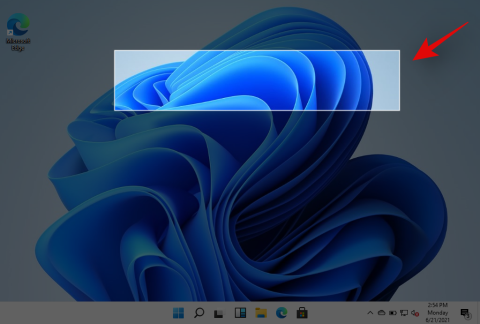
![Kaip pataisyti „Windows 11“ [15 būdų] Kaip pataisyti „Windows 11“ [15 būdų]](https://img2.webtech360.com/resources8/images31/image-6439-0105182722076.png)
![Kaip pataisyti „Windows 11“ [15 būdų] Kaip pataisyti „Windows 11“ [15 būdų]](https://img2.webtech360.com/resources8/images31/image-405-0105182722143.png)
![Kaip pataisyti „Windows 11“ [15 būdų] Kaip pataisyti „Windows 11“ [15 būdų]](https://img2.webtech360.com/resources8/images31/image-9440-0105182722204.png)
![Kaip pataisyti „Windows 11“ [15 būdų] Kaip pataisyti „Windows 11“ [15 būdų]](https://img2.webtech360.com/resources8/images31/image-9235-0105182955896.png)
![Kaip pataisyti „Windows 11“ [15 būdų] Kaip pataisyti „Windows 11“ [15 būdų]](https://img2.webtech360.com/resources8/images31/image-6752-0105182955965.png)
![Kaip pataisyti „Windows 11“ [15 būdų] Kaip pataisyti „Windows 11“ [15 būdų]](https://img2.webtech360.com/resources8/images31/image-9408-0105182722517.png)
![Kaip pataisyti „Windows 11“ [15 būdų] Kaip pataisyti „Windows 11“ [15 būdų]](https://img2.webtech360.com/resources8/images31/image-1959-0105182722745.png)
![Kaip pataisyti „Windows 11“ [15 būdų] Kaip pataisyti „Windows 11“ [15 būdų]](https://img2.webtech360.com/resources8/images31/image-3028-0105182722836.png)
![Kaip pataisyti „Windows 11“ [15 būdų] Kaip pataisyti „Windows 11“ [15 būdų]](https://img2.webtech360.com/resources8/images31/image-2165-0105182722899.png)
![Kaip pataisyti „Windows 11“ [15 būdų] Kaip pataisyti „Windows 11“ [15 būdų]](https://img2.webtech360.com/resources8/images31/image-9581-0105182722985.png)
![Kaip pataisyti „Windows 11“ [15 būdų] Kaip pataisyti „Windows 11“ [15 būdų]](https://img2.webtech360.com/resources8/images31/image-7098-0105182723056.png)
![Kaip pataisyti „Windows 11“ [15 būdų] Kaip pataisyti „Windows 11“ [15 būdų]](https://img2.webtech360.com/resources8/images31/image-1063-0105182723121.png)
![Kaip pataisyti „Windows 11“ [15 būdų] Kaip pataisyti „Windows 11“ [15 būdų]](https://img2.webtech360.com/resources8/images31/image-2132-0105182723214.png)
![Kaip pataisyti „Windows 11“ [15 būdų] Kaip pataisyti „Windows 11“ [15 būdų]](https://img2.webtech360.com/resources8/images31/image-6753-0105182723323.png)
![Kaip pataisyti „Windows 11“ [15 būdų] Kaip pataisyti „Windows 11“ [15 būdų]](https://img2.webtech360.com/resources8/images31/image-2650-0105182723417.png)
![Kaip pataisyti „Windows 11“ [15 būdų] Kaip pataisyti „Windows 11“ [15 būdų]](https://img2.webtech360.com/resources8/images31/image-3719-0105182723520.png)
![Kaip pataisyti „Windows 11“ [15 būdų] Kaip pataisyti „Windows 11“ [15 būdų]](https://img2.webtech360.com/resources8/images31/image-7789-0105182723725.png)
![Kaip pataisyti „Windows 11“ [15 būdų] Kaip pataisyti „Windows 11“ [15 būdų]](https://img2.webtech360.com/resources8/images31/image-2823-0105182723892.png)
![Kaip pataisyti „Windows 11“ [15 būdų] Kaip pataisyti „Windows 11“ [15 būdų]](https://img2.webtech360.com/resources8/images31/image-7821-0105182956057.png)
![Kaip pataisyti „Windows 11“ [15 būdų] Kaip pataisyti „Windows 11“ [15 būdų]](https://img2.webtech360.com/resources8/images31/image-7756-0105182724049.png)
![Kaip pataisyti „Windows 11“ [15 būdų] Kaip pataisyti „Windows 11“ [15 būdų]](https://img2.webtech360.com/resources8/images31/image-6893-0105182724113.png)
![Kaip pataisyti „Windows 11“ [15 būdų] Kaip pataisyti „Windows 11“ [15 būdų]](https://img2.webtech360.com/resources8/images31/image-8890-0105182956148.png)
![Kaip pataisyti „Windows 11“ [15 būdų] Kaip pataisyti „Windows 11“ [15 būdų]](https://img2.webtech360.com/resources8/images31/image-4377-0105182724504.png)
![Kaip pataisyti „Windows 11“ [15 būdų] Kaip pataisyti „Windows 11“ [15 būdų]](https://img2.webtech360.com/resources8/images31/image-5446-0105182724592.png)
![Kaip pataisyti „Windows 11“ [15 būdų] Kaip pataisyti „Windows 11“ [15 būdų]](https://img2.webtech360.com/resources8/images31/image-5068-0105182725172.png)
![Kaip pataisyti „Windows 11“ [15 būdų] Kaip pataisyti „Windows 11“ [15 būdų]](https://img2.webtech360.com/resources8/images31/image-9689-0105182725280.png)
![Kaip pataisyti „Windows 11“ [15 būdų] Kaip pataisyti „Windows 11“ [15 būdų]](https://img2.webtech360.com/resources8/images31/image-3654-0105182725335.png)
![Kaip pataisyti „Windows 11“ [15 būdų] Kaip pataisyti „Windows 11“ [15 būdų]](https://img2.webtech360.com/resources8/images31/image-7724-0105182725565.png)
![Kaip pataisyti „Windows 11“ [15 būdų] Kaip pataisyti „Windows 11“ [15 būdų]](https://img2.webtech360.com/resources8/images31/image-9311-0105182725854.png)
![Kaip pataisyti „Windows 11“ [15 būdų] Kaip pataisyti „Windows 11“ [15 būdų]](https://img2.webtech360.com/resources8/images31/image-3277-0105182725914.png)
![Kaip pataisyti „Windows 11“ [15 būdų] Kaip pataisyti „Windows 11“ [15 būdų]](https://img2.webtech360.com/resources8/images31/image-794-0105182726004.png)
![Kaip pataisyti „Windows 11“ [15 būdų] Kaip pataisyti „Windows 11“ [15 būdų]](https://img2.webtech360.com/resources8/images31/image-5932-0105182726311.jpg)
![Kaip pataisyti „Windows 11“ [15 būdų] Kaip pataisyti „Windows 11“ [15 būdų]](https://img2.webtech360.com/resources8/images31/image-5382-0105182726417.jpg)
![Kaip pataisyti „Windows 11“ [15 būdų] Kaip pataisyti „Windows 11“ [15 būdų]](https://img2.webtech360.com/resources8/images31/image-4518-0105182726486.jpg)
![Kaip pataisyti „Windows 11“ [15 būdų] Kaip pataisyti „Windows 11“ [15 būdų]](https://img2.webtech360.com/resources8/images31/image-7519-0105182726601.png)
![Kaip pataisyti „Windows 11“ [15 būdų] Kaip pataisyti „Windows 11“ [15 būdų]](https://img2.webtech360.com/resources8/images31/image-6969-0105182726712.png)
![Kaip pataisyti „Windows 11“ [15 būdų] Kaip pataisyti „Windows 11“ [15 būdų]](https://img2.webtech360.com/resources8/images31/image-4486-0105182726796.png)
![Kaip pataisyti „Windows 11“ [15 būdų] Kaip pataisyti „Windows 11“ [15 būdų]](https://img2.webtech360.com/resources8/images31/image-3622-0105182726853.png)
![Kaip pataisyti „Windows 11“ [15 būdų] Kaip pataisyti „Windows 11“ [15 būdų]](https://img2.webtech360.com/resources8/images31/image-4691-0105182726957.png)
![Kaip pataisyti „Windows 11“ [15 būdų] Kaip pataisyti „Windows 11“ [15 būdų]](https://img2.webtech360.com/resources8/images31/image-4141-0105182727056.png)
![Kaip pataisyti „Windows 11“ [15 būdų] Kaip pataisyti „Windows 11“ [15 būdų]](https://img2.webtech360.com/resources8/images31/image-7142-0105182727192.png)
![Kaip pataisyti „Windows 11“ [15 būdų] Kaip pataisyti „Windows 11“ [15 būdų]](https://img2.webtech360.com/resources8/images31/image-4659-0105182727255.png)
![Kaip pataisyti „Windows 11“ [15 būdų] Kaip pataisyti „Windows 11“ [15 būdų]](https://img2.webtech360.com/resources8/images31/image-5728-0105182727364.png)
![Kaip pataisyti „Windows 11“ [15 būdų] Kaip pataisyti „Windows 11“ [15 būdų]](https://img2.webtech360.com/resources8/images31/image-5177-0105182727469.png)
![Kaip pataisyti „Windows 11“ [15 būdų] Kaip pataisyti „Windows 11“ [15 būdų]](https://img2.webtech360.com/resources8/images31/image-6246-0105182727564.png)
![Kaip pataisyti „Windows 11“ [15 būdų] Kaip pataisyti „Windows 11“ [15 būdų]](https://img2.webtech360.com/resources8/images31/image-5695-0105182727667.png)
![Kaip pataisyti „Windows 11“ [15 būdų] Kaip pataisyti „Windows 11“ [15 būdų]](https://img2.webtech360.com/resources8/images31/image-3418-0105182727905.png)
![Kaip pataisyti „Windows 11“ [15 būdų] Kaip pataisyti „Windows 11“ [15 būdų]](https://img2.webtech360.com/resources8/images31/image-2867-0105182728010.png)
![Kaip pataisyti „Windows 11“ [15 būdų] Kaip pataisyti „Windows 11“ [15 būdų]](https://img2.webtech360.com/resources8/images31/image-2316-0105182728120.png)
![Kaip pataisyti „Windows 11“ [15 būdų] Kaip pataisyti „Windows 11“ [15 būdų]](https://img2.webtech360.com/resources8/images31/image-902-0105182728296.png)
![Kaip pataisyti „Windows 11“ [15 būdų] Kaip pataisyti „Windows 11“ [15 būdų]](https://img2.webtech360.com/resources8/images31/image-3903-0105182728416.png)
![Kaip pataisyti „Windows 11“ [15 būdų] Kaip pataisyti „Windows 11“ [15 būdų]](https://img2.webtech360.com/resources8/images31/image-1420-0105182728498.png)
![Kaip pataisyti „Windows 11“ [15 būdų] Kaip pataisyti „Windows 11“ [15 būdų]](https://img2.webtech360.com/resources8/images31/image-2489-0105182728594.png)
![Kaip pataisyti „Windows 11“ [15 būdų] Kaip pataisyti „Windows 11“ [15 būdų]](https://img2.webtech360.com/resources8/images31/image-3558-0105182728684.png)
![Kaip pataisyti „Windows 11“ [15 būdų] Kaip pataisyti „Windows 11“ [15 būdų]](https://img2.webtech360.com/resources8/images31/image-7422-0105182728754.png)
![Kaip pataisyti „Windows 11“ [15 būdų] Kaip pataisyti „Windows 11“ [15 būdų]](https://img2.webtech360.com/resources8/images31/image-212-0105182728819.png)
![Kaip pataisyti „Windows 11“ [15 būdų] Kaip pataisyti „Windows 11“ [15 būdų]](https://img2.webtech360.com/resources8/images31/image-3525-0105182728991.png)
![Kaip pataisyti „Windows 11“ [15 būdų] Kaip pataisyti „Windows 11“ [15 būdų]](https://img2.webtech360.com/resources8/images31/image-4594-0105182729090.png)
![Kaip pataisyti „Windows 11“ [15 būdų] Kaip pataisyti „Windows 11“ [15 būdų]](https://img2.webtech360.com/resources8/images31/image-9527-0105182729253.png)
![Kaip pataisyti „Windows 11“ [15 būdų] Kaip pataisyti „Windows 11“ [15 būdų]](https://img2.webtech360.com/resources8/images31/image-4249-0105182729349.png)
![Kaip pataisyti „Windows 11“ [15 būdų] Kaip pataisyti „Windows 11“ [15 būdų]](https://img2.webtech360.com/resources8/images31/image-2835-0105182729531.png)
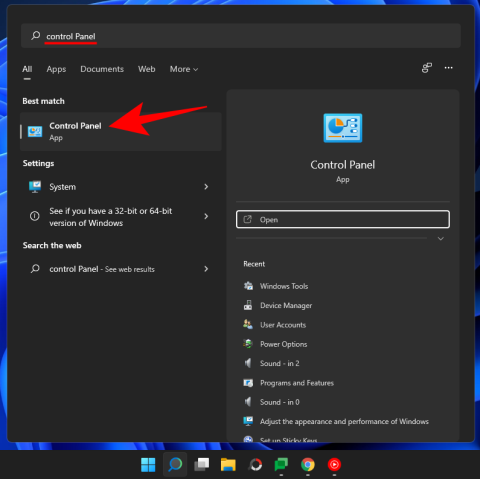










![Kaip įvesti akcentus „Windows 11“ [6 būdai] Kaip įvesti akcentus „Windows 11“ [6 būdai]](https://blog.webtech360.com/resources8/images31/image-285-0105182715408.png)






